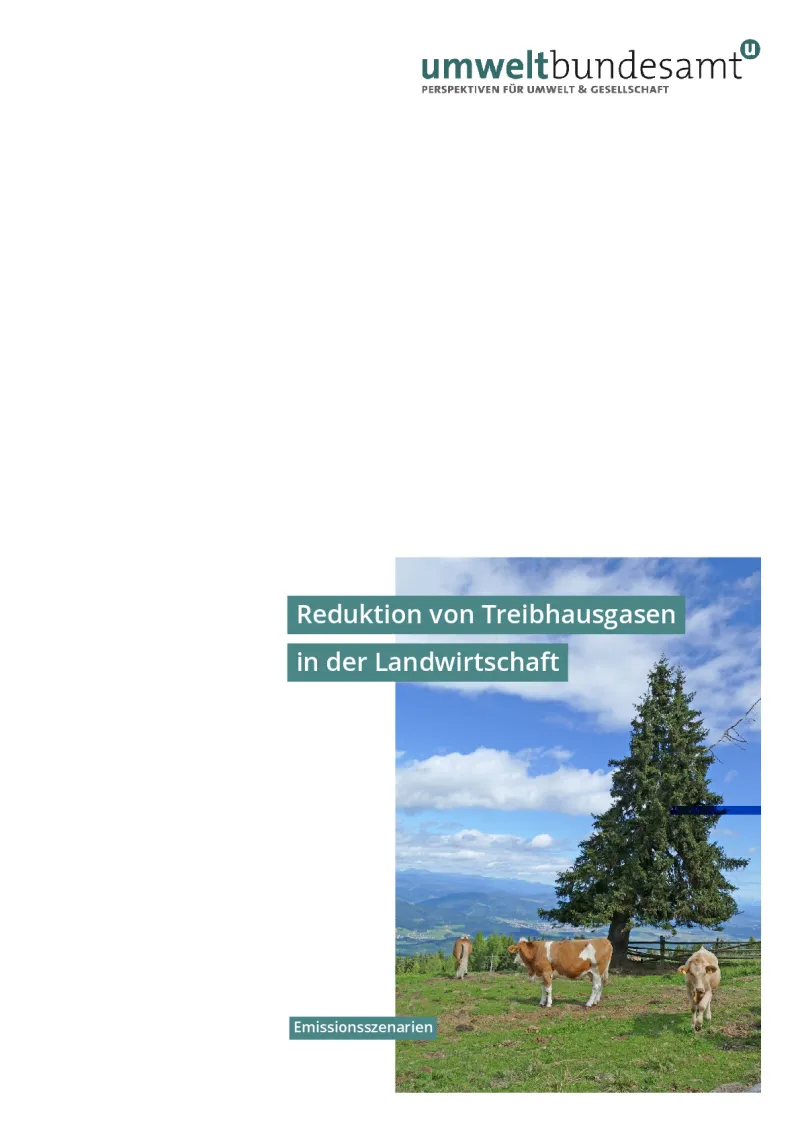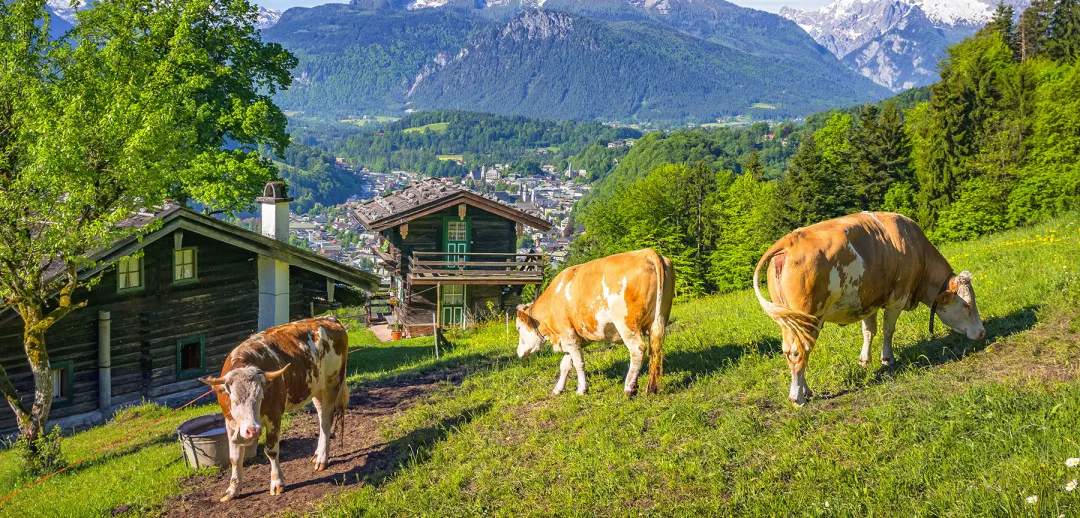Reduction of greenhouse gases in agriculture to achieve the goals of the Climate Protection Act
The study aims to develop and simulate specific assumptions, mitigation measures, and frame conditions that lead to a reduction of greenhouse gases in the agricultural sector in Austria.
- Austria
- 2014-2022
- Environmental impacts


This report is prepared on behalf of the Austrian Federal Ministry of Agriculture and Forestry, Regions and Water Management (BML) and the Austrian Federal Ministry for Climate Protection, Environment, Energy, Mobility, Innovation and Technology (BMK), and covers the period 1990-2050.
The aim of this study is to develop and simulate specific assumptions, mitigation measures, and frame conditions which lead to a reduction of greenhouse gases (GHG) emissions by 30% (WAM+) and 40% (WAM++) in the agriculture sector in Austria.
Within the scope of this study, scenarios of future activity and GHG emissions and removals from agricultural land use are developed. In addition to the effect on the GHG emissions, the economic effects of the scenarios are analysed. The results serve as the technical basis for the political decision-making process.
Regarding the methodological approach, the report describes the changes in the GHG emissions from the IPCC sector “Agriculture” and from the subcategories “Cropland” and “Grassland” of the IPCC sector “Land use, land-use change and forestry”.
The projected activity data on livestock numbers, milk yields, nitrogen amounts of mineral fertiliser and crop yields are estimated through the Positive Agricultural Sector Model Austria (PASMA), and serve as input data for calculating GHG emissions. The ADAGIO macroeconomic model derives the effects on employment and value added for the entire economy. Emissions are then calculated based on the methodologies used for the Austrian GHG inventory.
Based on the literature analysis, the report describes the GHG emissions reduction potential of the CAP SP 2023-2027 and RDP 2014-2020 measures.
Regarding the limitations, it is stated that the influences of climate change are considered in the PASMA analysis (via the cultivation of crop yields), but not for estimating the GHG emissions. Land use changes to other forms of land use are also not considered.
In terms of main results, the study shows, in the IPCC sector “Agriculture”, that all four scenarios demonstrate a reduction of GHG emissions for the agriculture sector until 2030, 2040, and 2050. As expected, the reductions are the smallest in the WEM scenario and largest in the WAM++ scenario. The main drivers of GHG emissions are livestock numbers, milk yields, and N amounts of mineral fertilisers.
In the subcategories “Cropland” and “Grassland” of the IPCC sector “Land use, land-use change and forestry”, the main driver of GHG emissions is drainage and management of organic grassland soils (about 13 000 ha according to the current GHG inventory). The WEM and WAM scenarios, where no rewetting of organic soils was implemented, show a slight increase in the GHG emissions of grassland by 2050. In contrast, in the WAM+ and WAM++ scenarios, rewetting or renaturation of organic grassland soils results in a strong reduction of GHG emissions (2050: - 17% in WAM+; - 47% in WAM++ compared to 2020). Overall, considering both subcategories, the adopted measures result in 2% higher GHG emissions in the WEM scenario and 30% lower GHG emissions in the WAM++ scenario in 2050.
A number of measures, both from the agricultural sector and from cropland and grassland, can contribute to an improvement of the GHG inventory (e.g. landscape elements, grassland soils, use of stabilised mineral fertilisers, manure treatment).
Regarding the CAP SP 2023-2027, the measures aim, on the one hand, to store carbon in the soil (carbon sinks), and on the other contribute to the reduction of GHG emissions – e.g. by refraining from the use of mineral fertilisers or through climate-friendly (and animal-friendly) farming. However, the use of renewable energy and the increase in energy efficiency are also included. The contribution of the measures to climate protection varies, and depends heavily on their degree of implementation (number of farmers implementing the measures).
Finally, regarding RDP 2014-2020, the expansion of production under the RDP includes agricultural activities directly related to GHG emissions (e.g. livestock and mineral fertiliser use). The calculations of GHG emissions for the agriculture sector thus showed an increase in GHG of 2.6% compared to the situation without the RDP. Considering the GHG-reducing effects of the project types of organic farming, restriction of yield-increasing inputs, avoidance of fungicides and ground-level slurry application, GHG emissions associated with increased production will be reduced from + 2.6% to + 0.7% compared to the situation without the RDP. On ammonia emissions reduction, the model calculations showed that, despite higher livestock populations and larger quantities of mineral fertilisers, the RDP reduces ammonia emissions by 2.6% compared to the situation without the RDP. This is due to the emission-reducing effects of the “ground-level application of liquid farm manure and biogas slurry”, "animal welfare - pasture", "animal welfare - livestock housing stabling" and "investment in slurry storage cover" measures.
Author(s)
Michael Anderl, Manuela Bürgler, Simone Mayer, Erwin Moldaschl, Elisabeth Schwaiger, Bettina Schwarzl, Peter Weiss (Austrian Federal Environment Agency); Franz Sinabell (Austrian Institute of Economic Research – WIFO); Katharina Falkner, Martin Schönhart (University of Natural Resources and Life Sciences – BOKU); Georg Dersch (Austrian Agency for Health and Food Safety – AGES)
Resources
Documents
Reduction of greenhouse gases in agriculture to achieve the goals of the Climate Protection Act
(PDF – 3.31 MB – 221 pages)